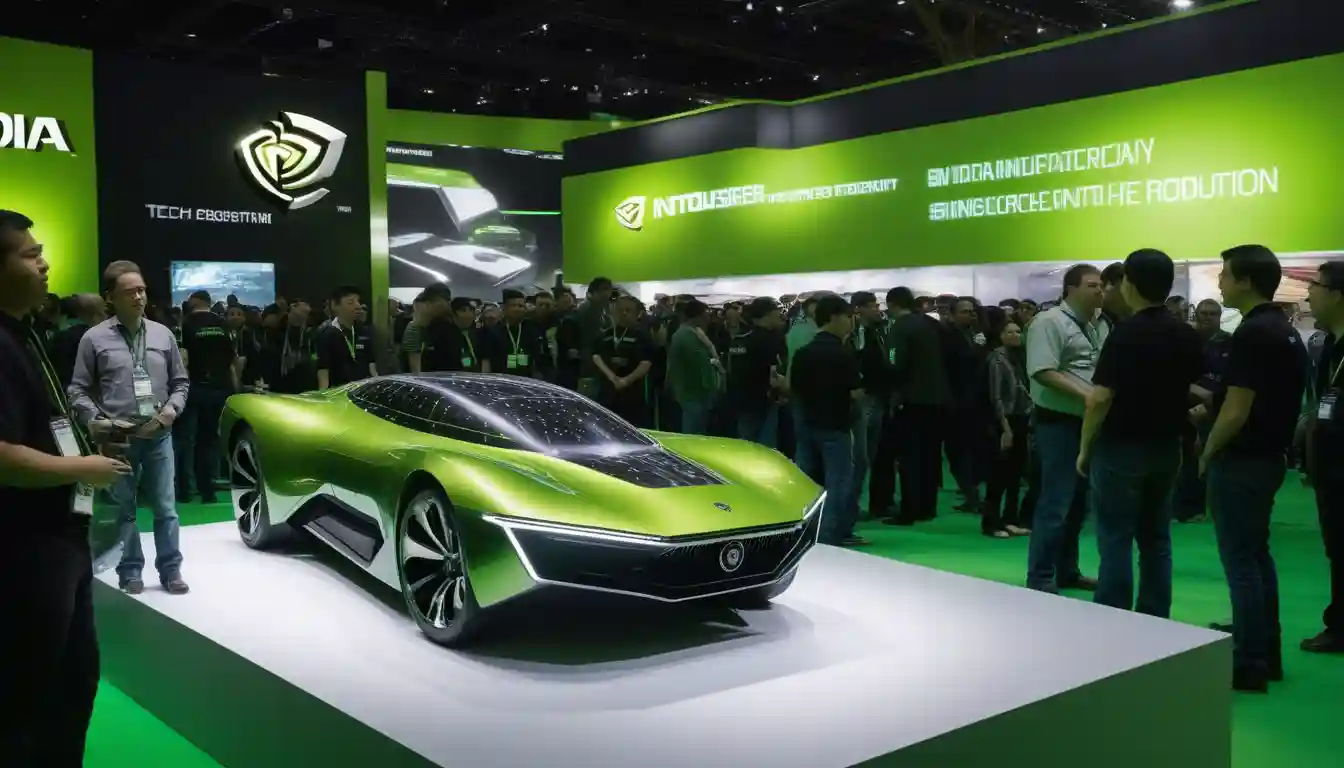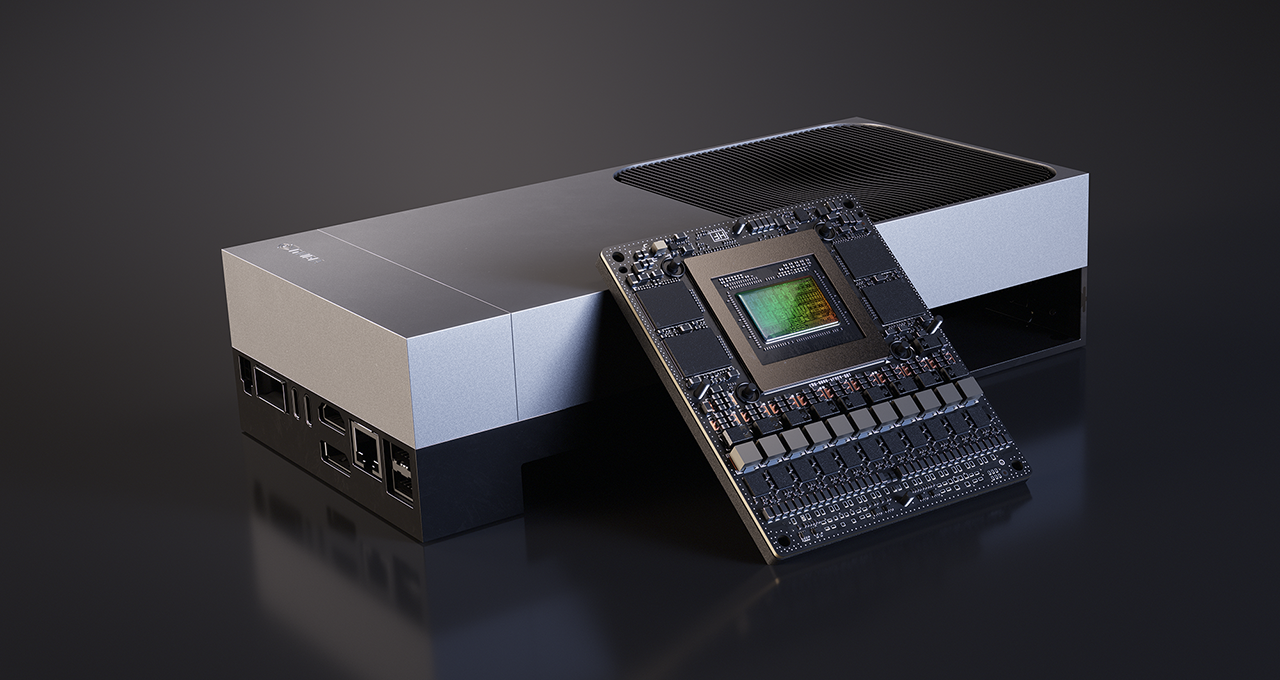
NVIDIA Launches Jetson Thor Robotics Computer with 7.5x More AI Processing Power
The Computing Revolution That Will Define Physical AI
SANTA CLARA, California — NVIDIA announced the general availability of its Jetson AGX Thor developer kit and production modules on August 25, marking a significant advancement in robotics computing hardware. The new platform, powered by the company's Blackwell GPU architecture, delivers 2,070 FP4 teraflops of AI processing power within a 130-watt power envelope while incorporating 128GB of memory.

The Jetson Thor represents a substantial performance leap over its predecessor, the Jetson Orin, providing 7.5 times more AI compute capability and 3.5 times greater energy efficiency. These robotics computers are specifically designed for what NVIDIA terms "physical AI"—enabling robots to process complex artificial intelligence models directly on-device rather than relying on cloud-based computation.
"We've built Jetson Thor for the millions of developers working on robotic systems that interact with and increasingly shape the physical world," said Jensen Huang, NVIDIA's founder and CEO. "With unmatched performance and energy efficiency, and the ability to run multiple generative AI models at the edge, Jetson Thor is the ultimate supercomputer to drive the age of physical AI and general robotics."
The announcement comes as NVIDIA reports over 2 million developers now utilize the company's robotics software stack, with the previous Jetson Orin platform enabling more than 7,000 customers to deploy edge AI solutions across various industries. Early adopters of Thor include major technology and industrial companies: Agility Robotics, Amazon Robotics, Boston Dynamics, Caterpillar, Figure, Hexagon, Medtronic, and Meta. Additionally, 1X, John Deere, OpenAI, and Physical Intelligence are currently evaluating the platform for their physical AI applications.
The technical specifications underscore the magnitude of this advancement. Thor's system-on-module architecture solves what NVIDIA identifies as one of robotics' most significant challenges: enabling robots to conduct real-time, intelligent interactions with people and their physical environment. The platform can effortlessly run multiple AI models simultaneously—from vision-language-action models like NVIDIA's Isaac GR00T N1.5 to popular large language and vision models—all while maintaining the low-latency performance critical for physical AI applications spanning humanoid robotics, agricultural automation, and surgical assistance.
This computational leap matters because it addresses a fundamental bottleneck that has constrained robotic intelligence for decades. Traditional approaches required either cloud-based processing, which introduces unacceptable latency for real-time applications, or severely limited on-device computation that restricted robots to simple, pre-programmed tasks.
Following the Investment Trail: Where Capital Flows Next
Thor's $3,499 developer kit price point and estimated $2,999 production module cost at scale reveal NVIDIA's strategic positioning. Rather than competing in cost-sensitive markets, the company is targeting high-value applications where computational capability justifies premium pricing—a strategy that mirrors its dominance in data center AI acceleration.
Early adopters including Amazon Robotics, Boston Dynamics, Caterpillar, Figure, and Medtronic represent a carefully curated ecosystem spanning logistics, construction, healthcare, and humanoid robotics. This diversification suggests NVIDIA's confidence in Thor's applicability across multiple high-growth verticals.
Investment analysis reveals several compelling dynamics. The global robotics market, valued at $36.9 billion in 2024, is projected to reach $89.8 billion by 2030, with AI-powered systems commanding premium valuations. Companies deploying Thor-powered solutions gain first-mover advantages in markets where computational superiority translates directly to performance differentiation.
The warehouse automation segment presents immediate monetization opportunities. With e-commerce driving demand for flexible, intelligent logistics systems, robots capable of handling mixed inventories and adapting to dynamic environments command significant premiums over traditional fixed-automation solutions. Thor's ability to process visual-language commands and reason about unstructured tasks positions it ideally for this transition.
The Ecosystem Advantage: More Than Hardware
Thor's competitive moat extends far beyond raw computational power. NVIDIA's integrated software stack—encompassing Isaac robotics simulation, GR00T foundation models, Metropolis vision AI, and Holoscan sensor processing—creates switching costs that competitors struggle to replicate.
This ecosystem approach mirrors Apple's strategy in consumer electronics, where hardware and software integration creates user experiences difficult to achieve through component-based approaches. For robotics companies, the value proposition extends beyond performance metrics to development velocity and time-to-market advantages.
The platform's compatibility with popular AI frameworks and generative models provides future-proofing that institutional investors value highly. As foundation models continue evolving, Thor's architecture can adapt without requiring complete system redesigns—a critical consideration for capital-intensive robotics deployments.
More than 2 million developers already work within NVIDIA's robotics ecosystem, with over 7,000 customers deploying Orin-based solutions across industries. This installed base creates network effects that compound Thor's advantages, as shared learning and community development accelerate innovation cycles.
Reading the Competitive Landscape
Thor's launch occurs against a backdrop of intensifying competition in edge AI processing. Qualcomm's RB6 platform offers superior power efficiency for mobile applications, while AMD's Versal AI Edge provides deterministic control for safety-critical systems. However, no competitor currently matches Thor's combination of raw throughput, software ecosystem, and cross-industry applicability.
The competitive dynamics reveal distinct market segmentation. Power-constrained applications—small drones, handheld devices, battery-operated systems—remain the domain of specialized processors optimized for efficiency over performance. Thor targets the opposite end of the spectrum: applications where computational capability justifies energy consumption and thermal management requirements.
This positioning strategy reflects broader trends in AI deployment. As models become increasingly sophisticated, the performance floor for meaningful applications continues rising. Thor positions NVIDIA at the high end of this evolution, capturing premium value as complexity drives computational requirements upward.
Investment Thesis: Timing the Physical AI Inflection
The convergence of several technological trends supports a compelling investment narrative around Thor and its ecosystem. Generative AI models are becoming increasingly capable of reasoning about physical environments. Labor shortages in manufacturing, logistics, and healthcare create economic incentives for automation adoption. Regulatory frameworks are evolving to accommodate advanced autonomous systems.
For investors, Thor represents exposure to this convergence without requiring direct bets on individual robotics companies. The platform strategy means NVIDIA captures value across multiple applications and use cases, reducing concentration risk while maintaining upside participation.
However, several factors merit careful consideration. Supply chain constraints affecting advanced semiconductors could limit availability, particularly if data center demand competes for manufacturing capacity. The $3,000+ price point restricts addressable markets to high-value applications, potentially limiting volume growth. Thermal and power requirements may prove challenging for certain deployment environments.
Near-term opportunities likely concentrate in industrial and logistics applications where economic justification is clearest. Humanoid robotics, while capturing significant attention and investment, remains several years from large-scale commercial deployment. Investors should calibrate expectations accordingly, recognizing the difference between technological capability and market adoption timelines.
The Transformation Accelerates
Thor's availability marks an inflection point in physical AI development—the moment when computational constraints cease limiting robotic intelligence. For the first time, developers can focus on algorithms and applications rather than wrestling with hardware limitations.
This transition parallels previous technological shifts where improved tools accelerated innovation. The personal computer enabled software entrepreneurship. Cloud computing democratized scalable applications. Thor and similar platforms may enable a new wave of physical AI innovation, where intelligent systems become as ubiquitous as smartphones are today.
The investment implications are profound. Companies that successfully leverage Thor's capabilities to create differentiated robotic solutions may capture outsized returns as markets mature. Those that fail to adapt risk obsolescence as computational advantages compound over time.
As one industry analyst observed, "We're witnessing the birth of truly intelligent machines. The question isn't whether this transformation will occur, but which companies will lead it—and which will be left behind."
The age of general robotics, long promised but technically constrained, may finally be arriving. For investors willing to navigate near-term uncertainties, the potential rewards could be transformational.
Past performance does not guarantee future results. Investors should conduct thorough due diligence and consult qualified financial advisors before making investment decisions based on emerging technologies and market trends.